––––
Alexandros Tsougkranis
––
Acronauplia is a rocky peninsula that was the acropolis of Nafplio in antiquity. Located opposite Bourtzi and accessible only from the north via the historic Arvanitia gorge, it has an average height of 45 meters, a length of 900 meters, and a width of 400 meters. Some parts of its cyclopean walls still survive today. The history of Acronauplia mirrors Nafplio's, having been controlled by the Romans, Byzantines, Franks, Venetians, and Ottomans until Greece's liberation. Today, Acronauplia is characterized by its historical layers and tourist infrastructure, such as the abandoned Xenia Hotel, Xenia Palace Bungalows and Nafplia Palace.


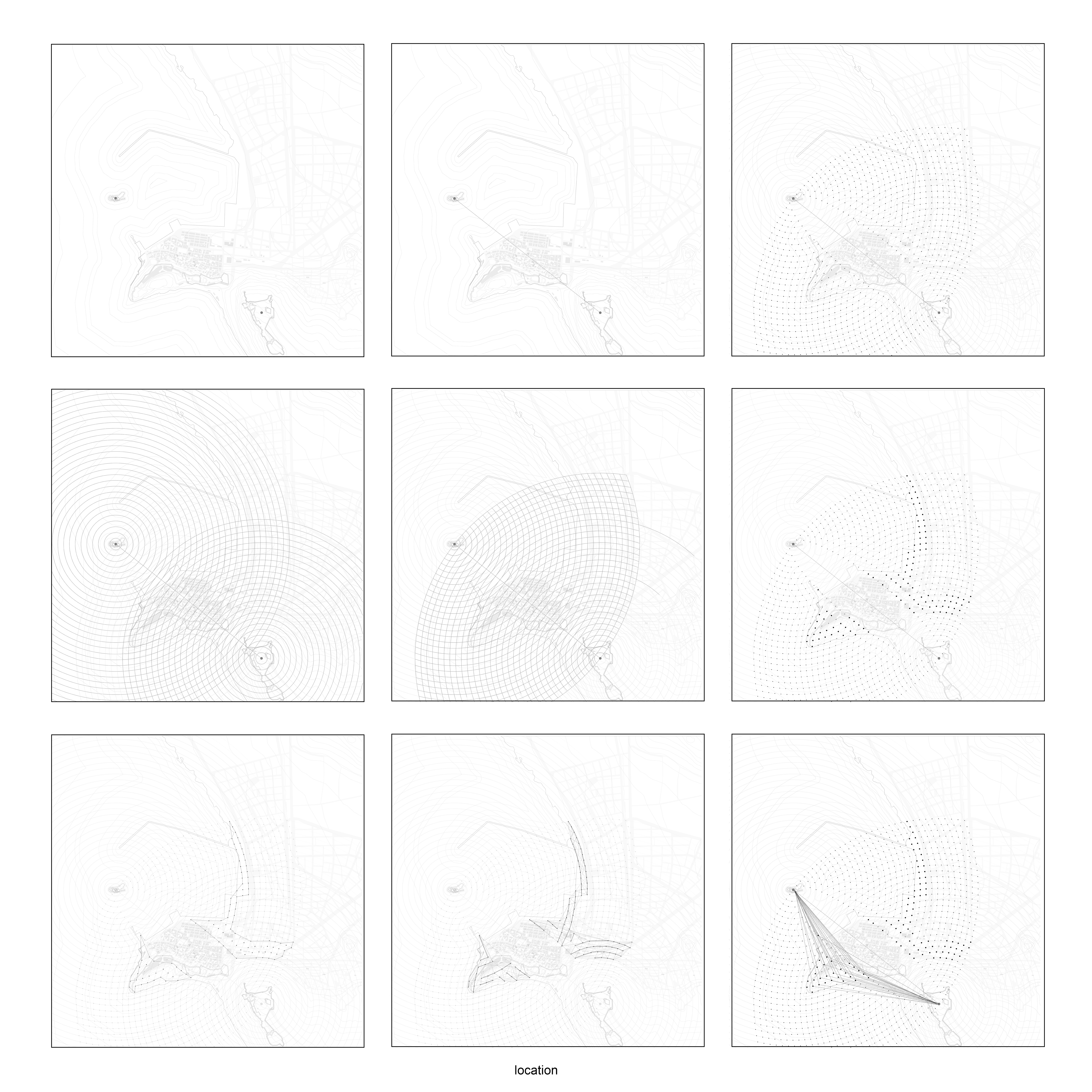

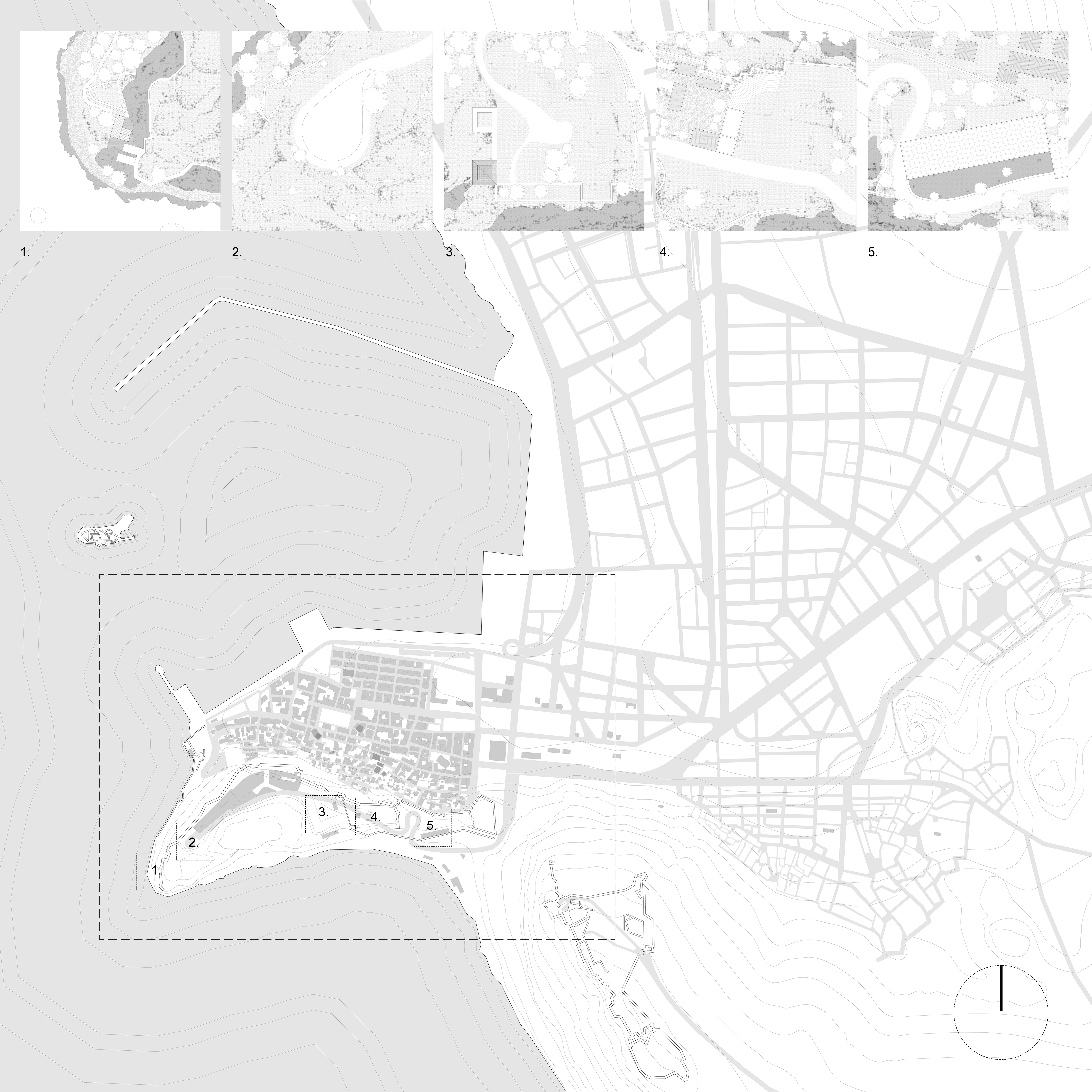


Lutropolis, a peaceful place of healing
––––
Alexandros Tsougkranis
––
The project is to transform Acronauplia into a sacred place for the healing of body and soul. Inspired by the history of Argolis with its acropolises and sanctuaries, such as the Sanctuary of Asclepius, and by Roman baths, Poseidons power begins to spread healing in a chthonic way, similar to Asclepius who resided under the labyrinthine Tholos. The underground secret is hidden behind a huge water pump that supplies the Lutro-polis with water, along with a series of interventions related to the historical layers of the Acro-polis. These include the cinstern, the baths, the elderly care center, the refreshment area, the co-working space rental company, and the rehabilitation center. All of the above are integrated into the Acropolis so that the rich vegetation, which is part of the Natura network, is not lost, thus completing the tranquility of mind and body, which is a privilege for all people regardless of economic status.











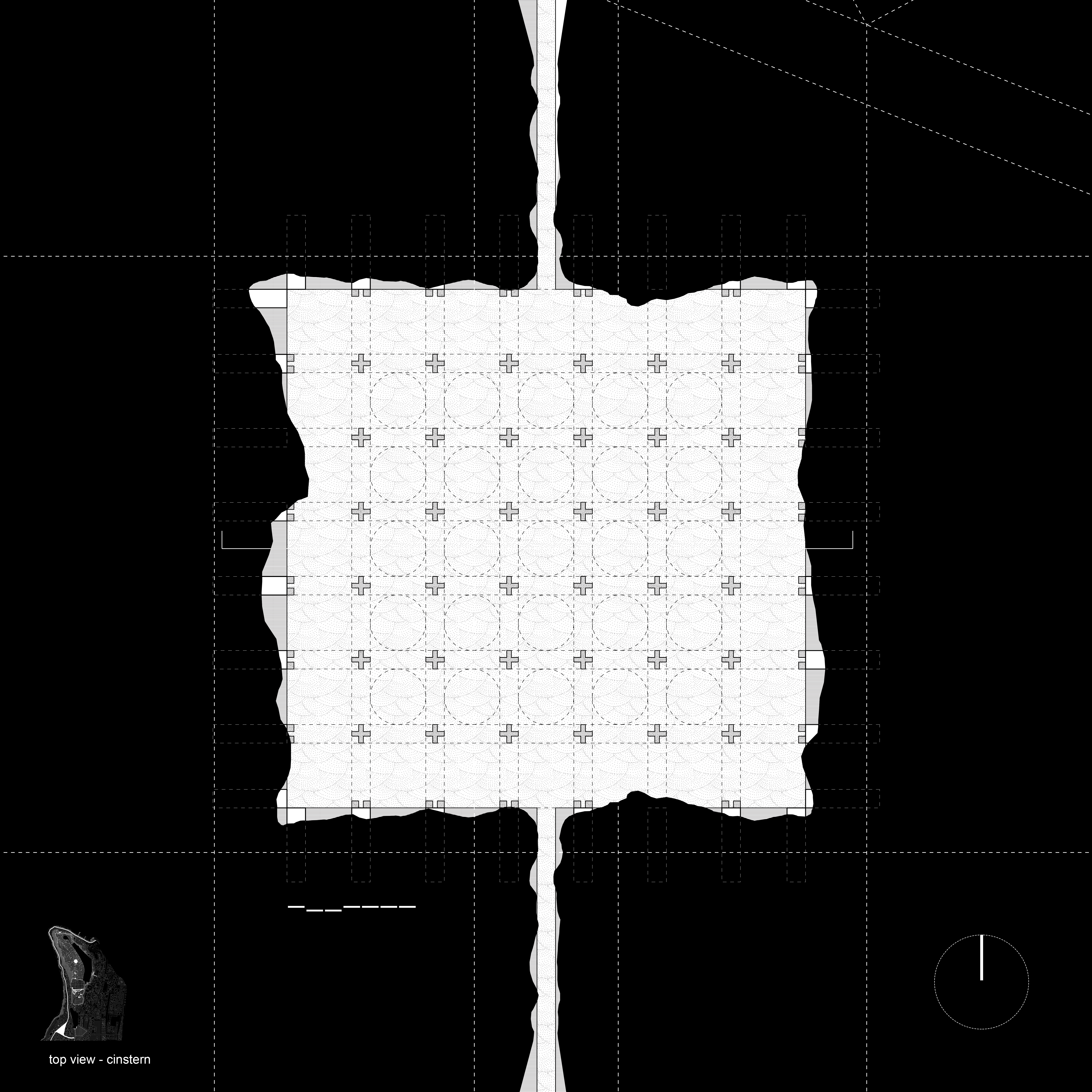

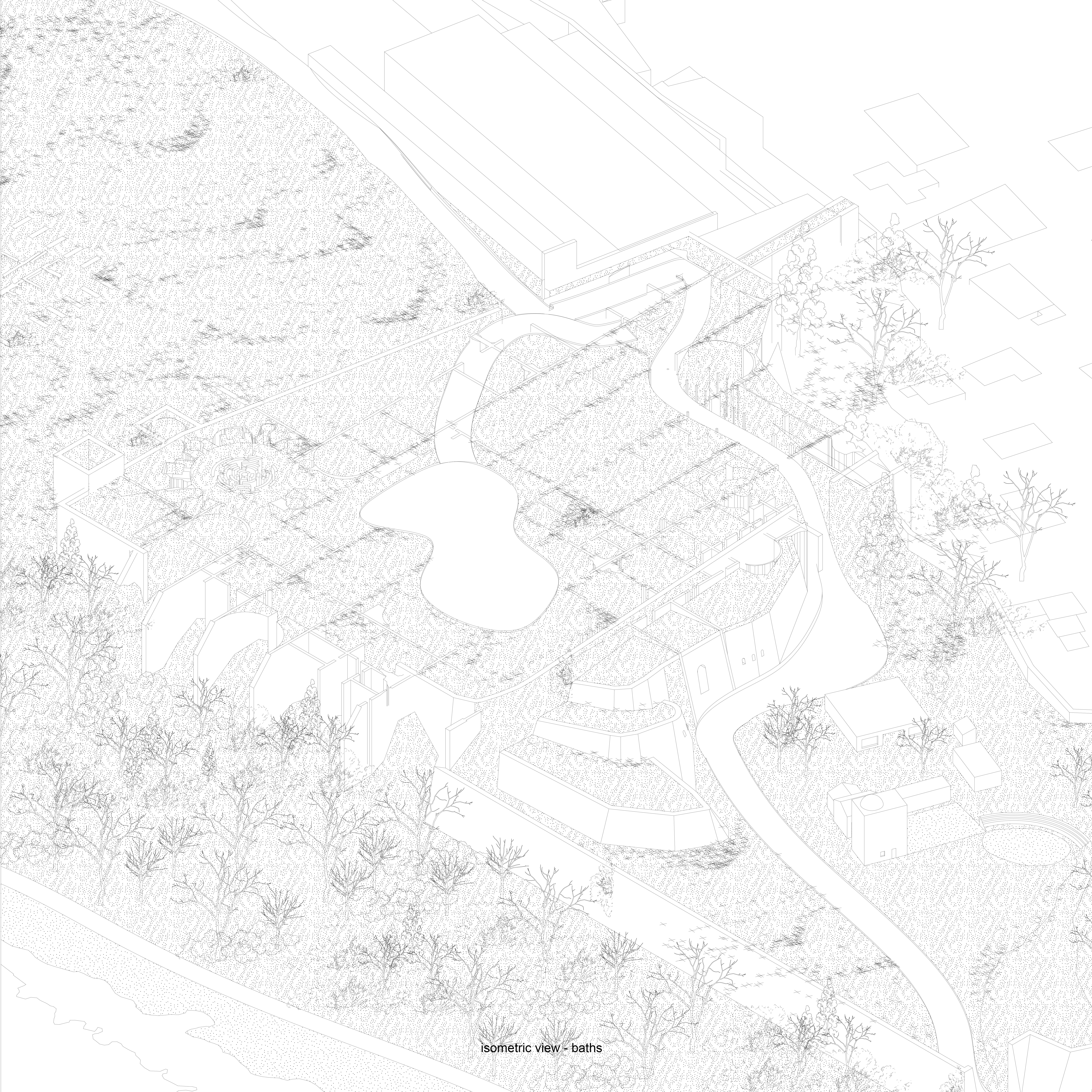



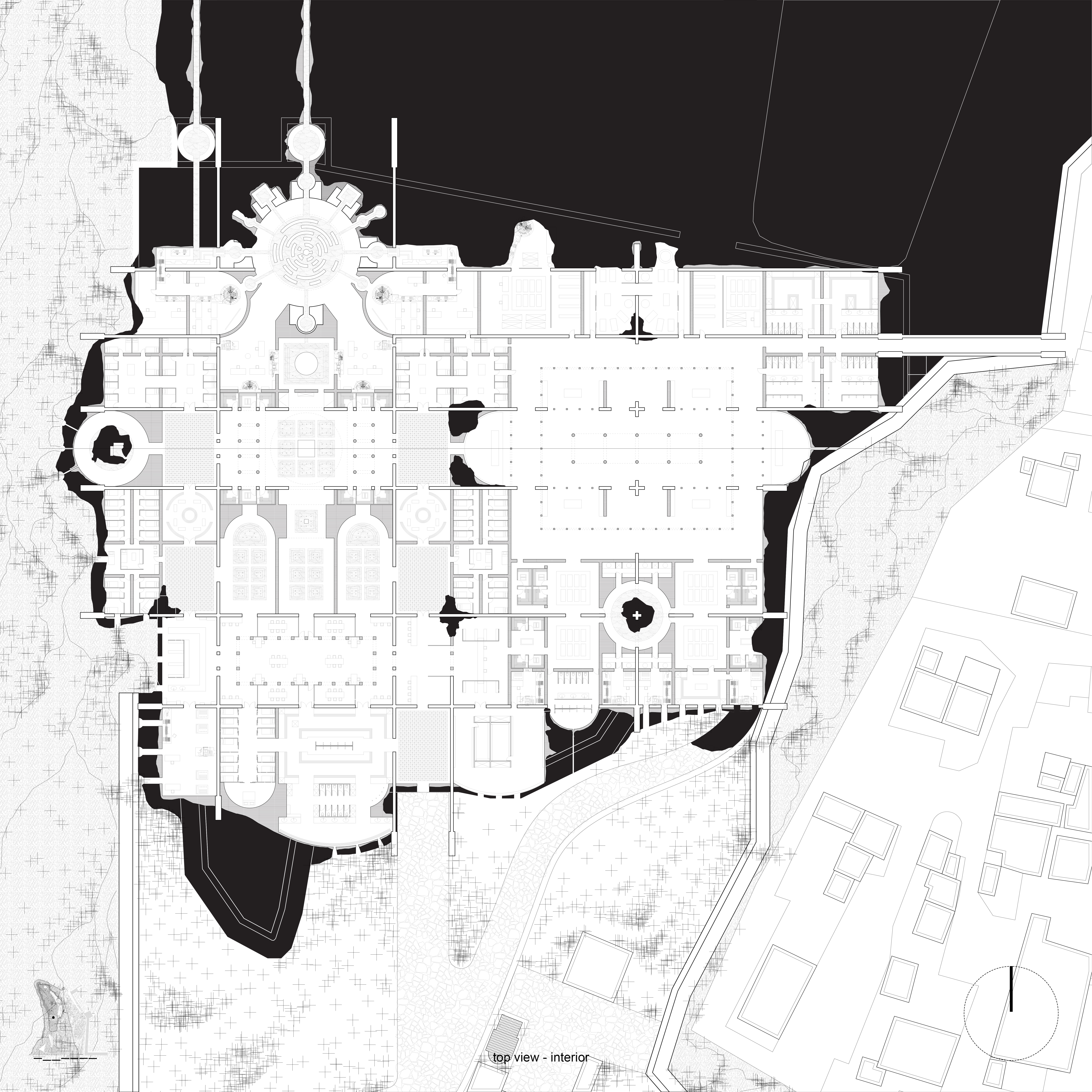



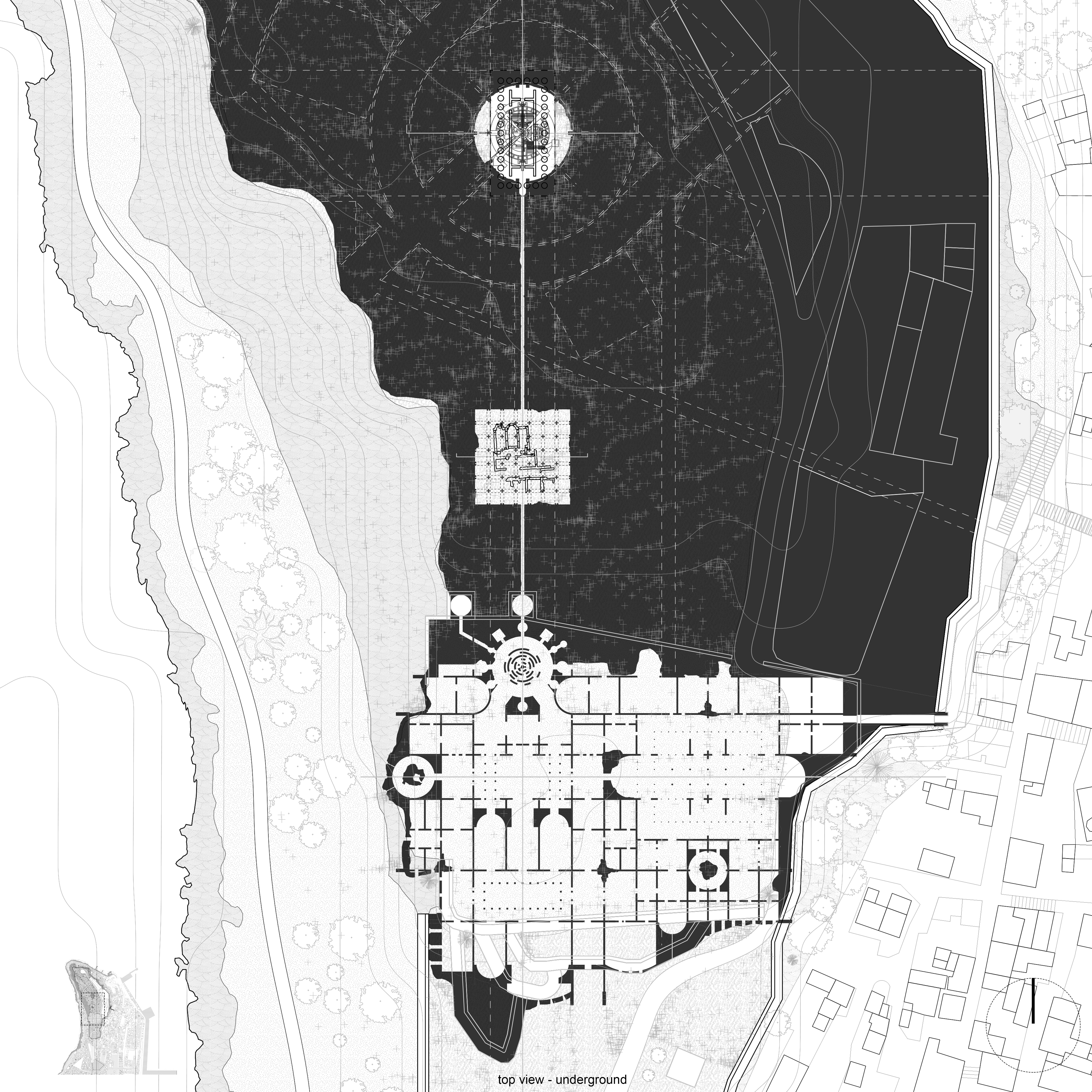





bibliographic references, credits
all drawings and images ©Coastal Domains, DoAUP, Katsota D., Tsougkranis A.
special thanks to Mr. Antoniadis for the provision of drawings of the archeological sites and useful information about the city of Nafplio.